Gentle reader,
I’m currently fascinated by AI generated images. I think the tech might be in a unique moment. It’s just good enough to introduce to the public, but it’s not yet able to avoid stereotypes and grotesqueries. It’s a relatively unedited window into our collective consciousness and so, though utterly inhuman, it tells us a great deal about our humanity.
In the new edition of Practicing Christian Doctrine, I wrote this:
In the West, Christian art evolved away from theological restraint. For instance, artists felt comfortable portraying the Father … and our imaginations were colonized by images of bearded white men depicted as divine.
We might downplay the importance of imagining God as a Zeus-like, bearded, old man in the sky, but we do so at our own peril. Idolatry has consequences. We become like what we worship.
I gave an AI image generator some simple prompts, and here are the results.
For the prompt, “God the Father:”
This succeeds in being about as predictable and stereotyped an image as possible.
A weird mix of iconographic references and Western Renaissance stuff.
Possibly, this last father is smoking a cigar? He has something in his hand.
If there’s anything surprising about these images, it’s in how absolutely they do not surprise. They’re bad copies of every piece of Zeusical god art. In their bearded white power, these fathers are mirrors of earthly patriarchy. They challenge no assumptions about gender or power. They look down on us from on high, and our avatars, in the images, cringe before them. Our avatars, in the real world, seek to emulate this ungodly power.
For the prompt, “God the Son:”
Again, a lotta clouds. Scary face.
The beard is pretty cool. Maybe evoking some waves with that hint of a Poseiden style crown?
That might be a hint of a crown of thorns, but it might just as well be a bad haircut or a wreath of laurels.
Here, I was a bit surprised that the images I got were pretty much indistinguishable from those the AI gave me for “God the Father.” I thought the phrase “God the Son” might pull up some more obvious Christological referents, at least something a little earthy. But no. Instead, we again have lots of clouds and men of worldly power, Zeusish gods, Feuerbachian men writ large. Perhaps the AI is trying an unsophisticated riff on John 10:30 (“ I and the Father are one.), but I doubt it.
For the prompt, “God the Holy Spirit:”
Brace yourself.
Faceless Jesus glows with giant wings: wings kind of like a bygone Victoria’s Secret runway ad. Or one of those wall murals you can pose in front of for your Insta.
OK. At last, we have some biblical imagery. “Holy Spirit” must be a more specific biblical reference than is “Son.”
But it does bring to mind Sarah Coakley’s invocation of her colleague, Meg Twycross, “who used to say of this form of trinitarian representation, ‘hunt the pigeon!’” (God, Sexuality, and the Self, page 211. I highly recommend the book for a tour of the failures of trinitarian art, which failures are, of course, feeding the AI).
From Coakley, page 341.
Here, a cross—our clearest Jesus referent in this AI art show—stands above the pigeon/dove. Lots more clouds. Radiance reflecting wings. And a weird pair of white human hands where the bird’s legs should be.
For the prompt, “Idol worship:”
Ah, now. Here’s the truth. The idol image could just as well be the father image. That tells us something horrifying about our imaginations, about the world in which we are trying to tell the truth about God.
This idol is no different from AI versions of false-god-the-fathers, holding up his orbs like any good medieval king. Or is that a potato he’s holding? A fish?
The idol worshipers, seen below, are distorted and inhuman, shaped into something false by their worship of a false god.
This piece, of course, isn’t about AI. It’s about what AI tells us about our consciousness, our culture, our history, our idolatrous traps.
How wild is this? The same God who bans the making of idolatrous images creates us to image the divine.
“You shall not make for yourself an image in the form of anything in heaven above or on the earth beneath or in the waters below” (Exodus 20:4).
“in the image of God he created them;
male and female he created them” (Genesis 1:27).
And God gives us Jesus, who is the “brightness” of God’s glory and “the express image of His person” (Hebrews 1:3, NKJV) and so enables us, who “have borne the image of the earthly man” to be transformed that we might “bear the image of the heavenly man” (1 Corinthians 15:49).
We cast out the false Gods by turning to Jesus.
Purge the idols. Turn to Jesus. Look full on his wonderful face. Not the face of Zeus. Not the face of Feuerbach. The face of the one who, for our sake, emptied himself, the one who, for our sake, bore death on a cross, and the one who, leading us, conquered death in resurrection.
Grace & peace,
BFJ
This piece contains associate links. As always, I’m grateful if you choose to subscribe, forward, or share. Want to support my work but can’t become a supporting subscriber? Buy me a coffee.






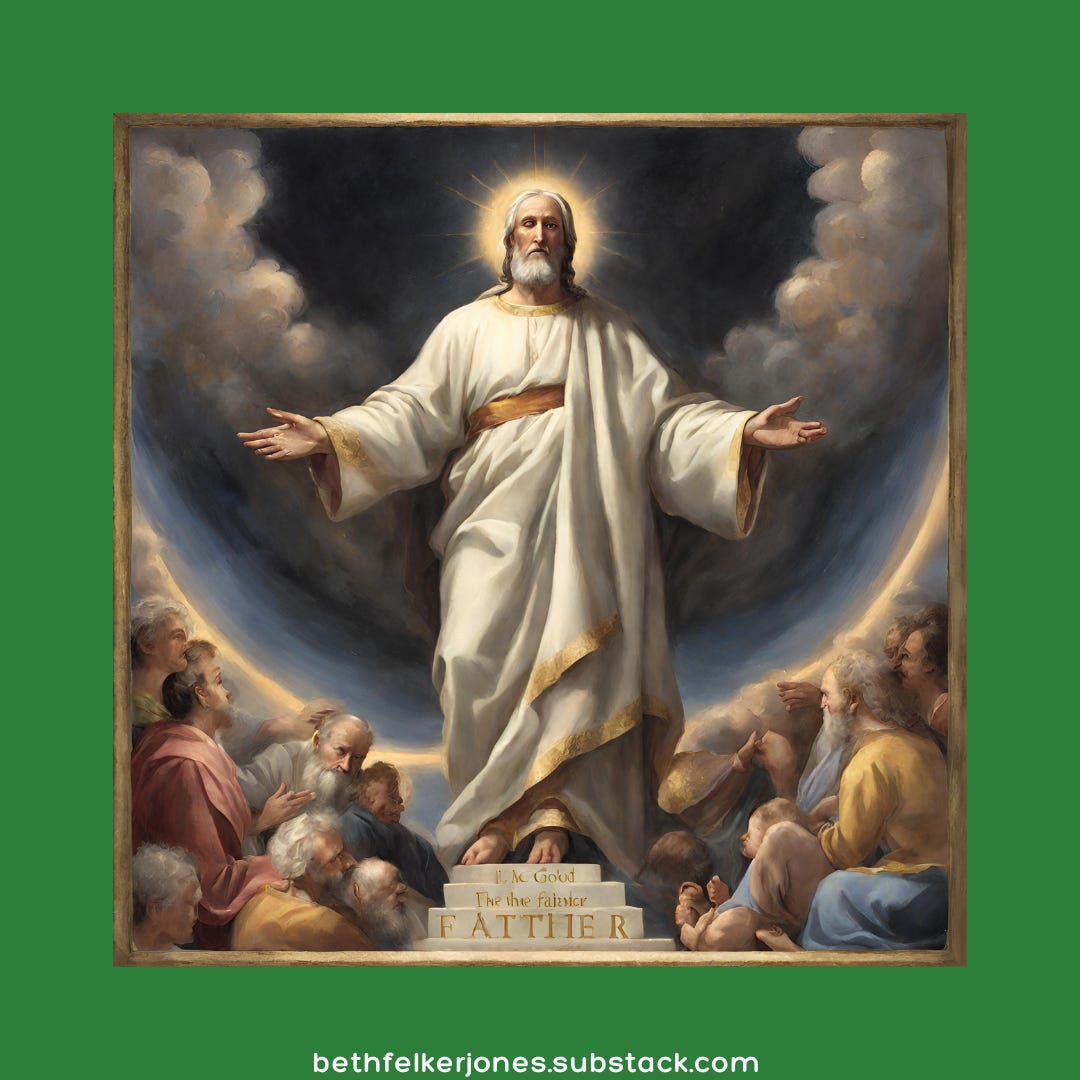

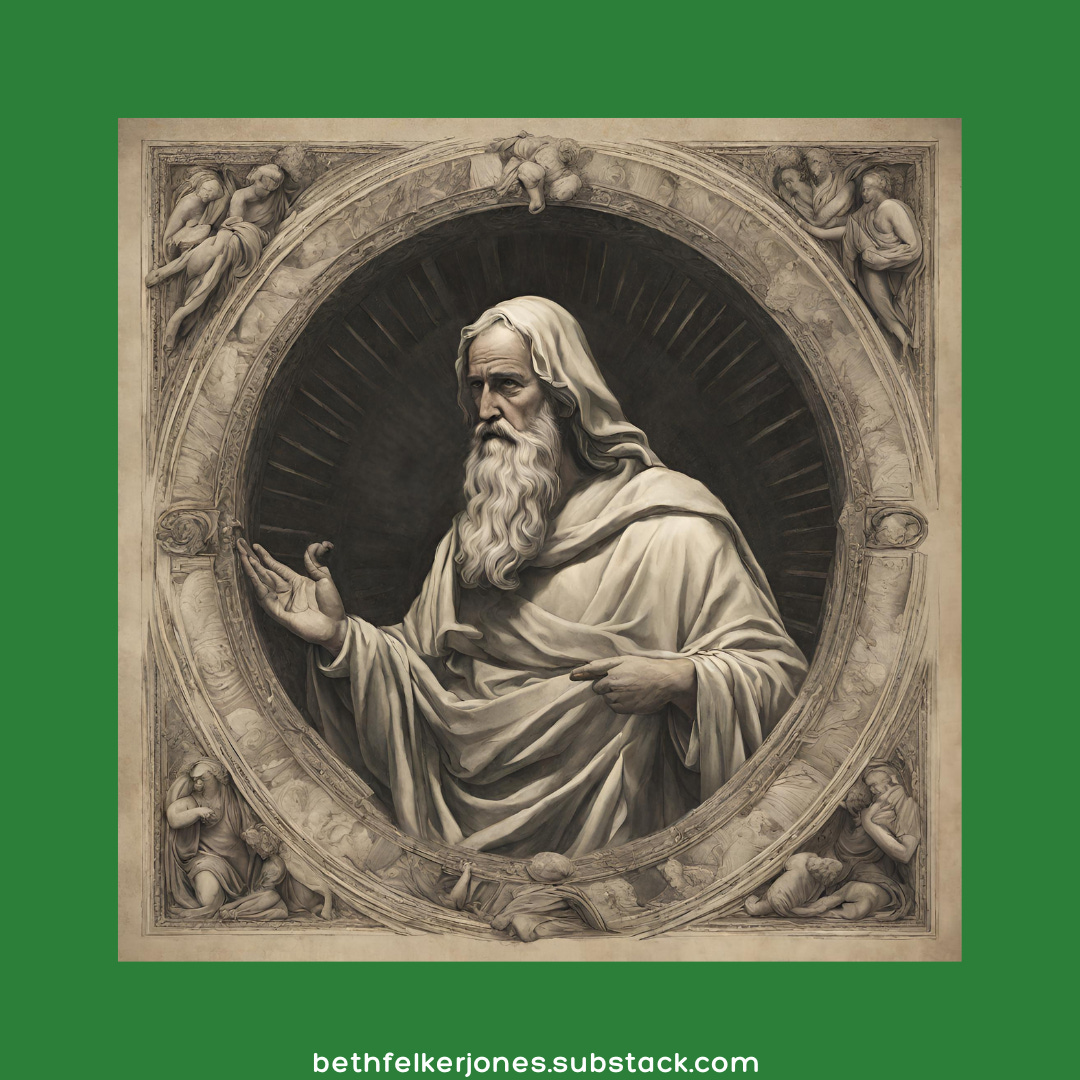
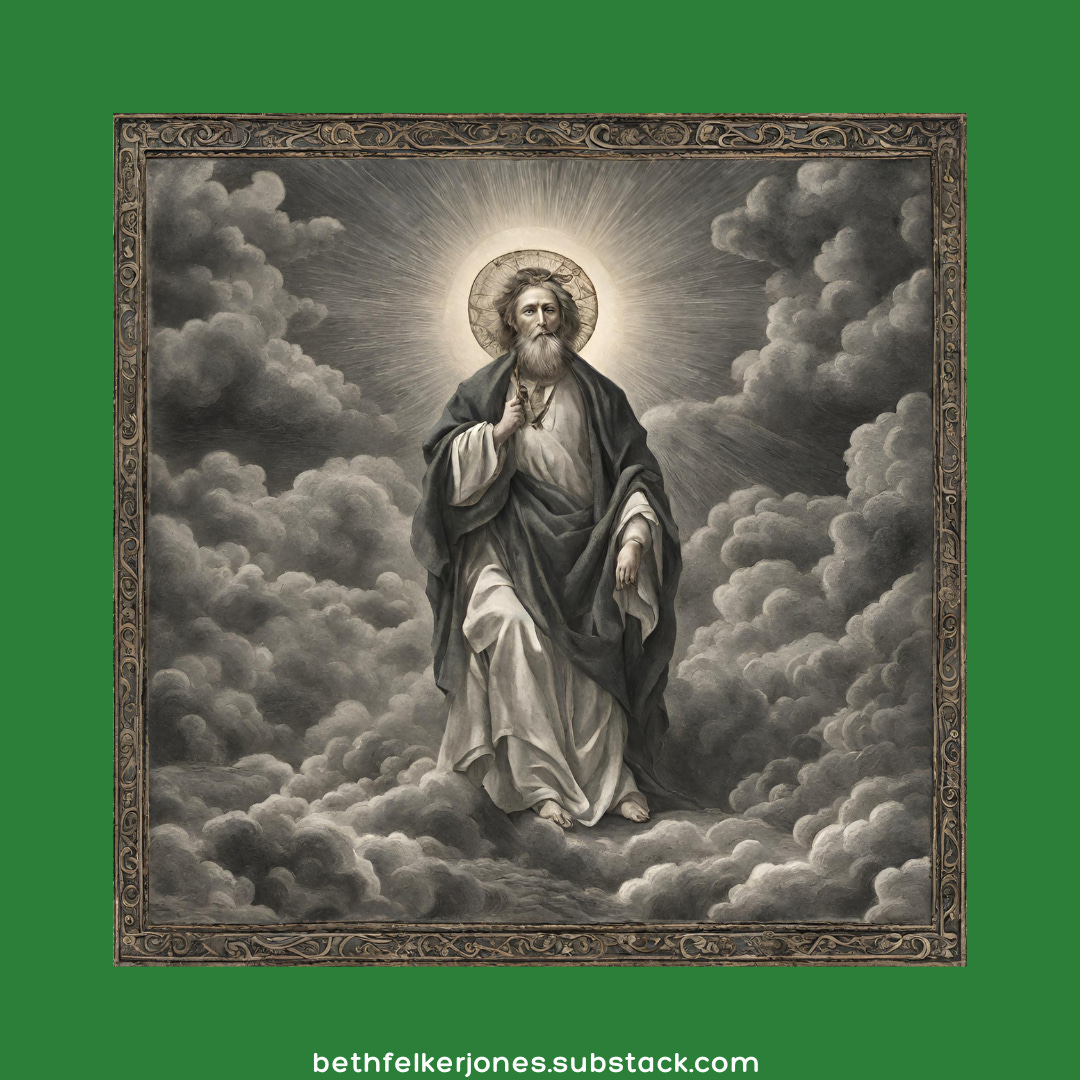
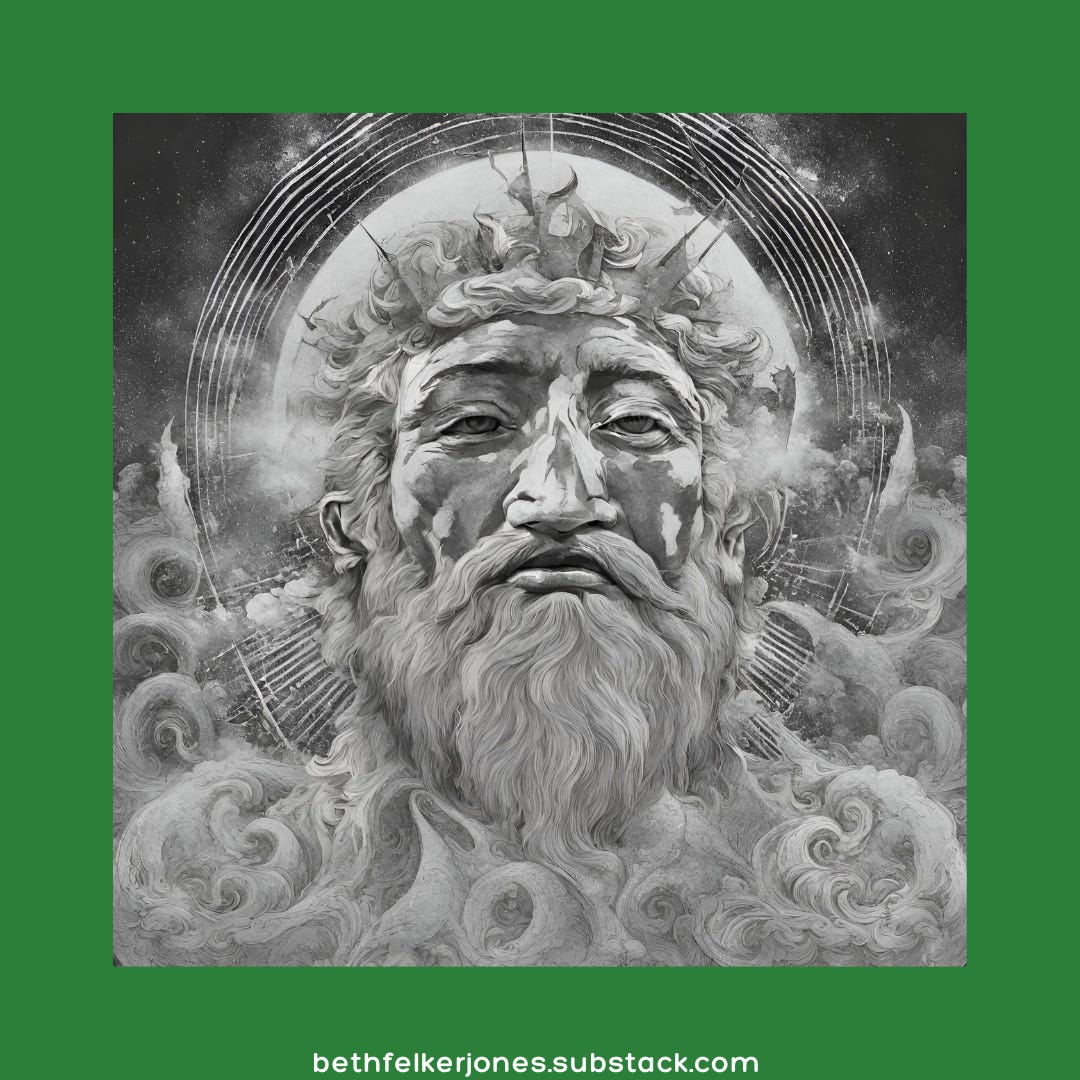
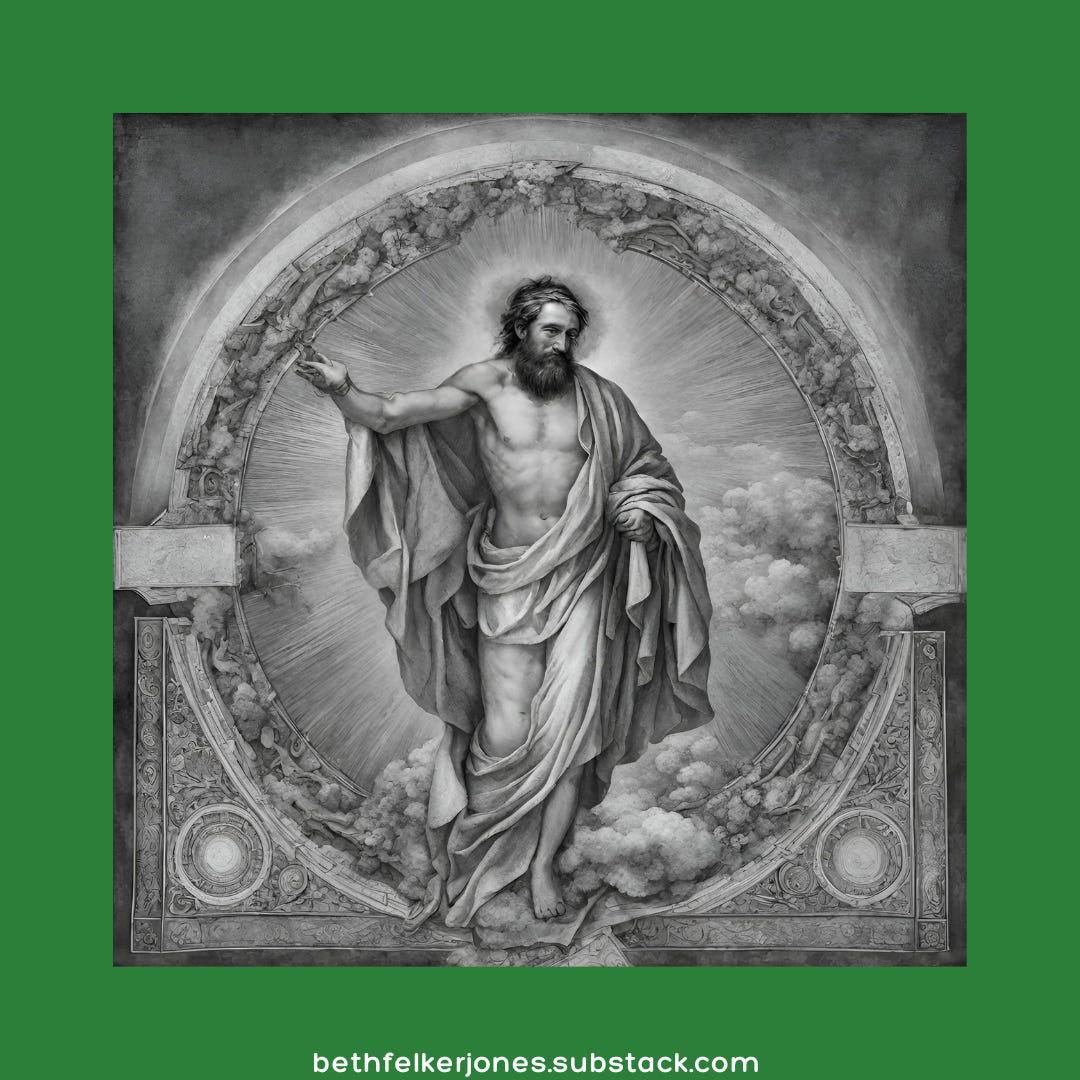
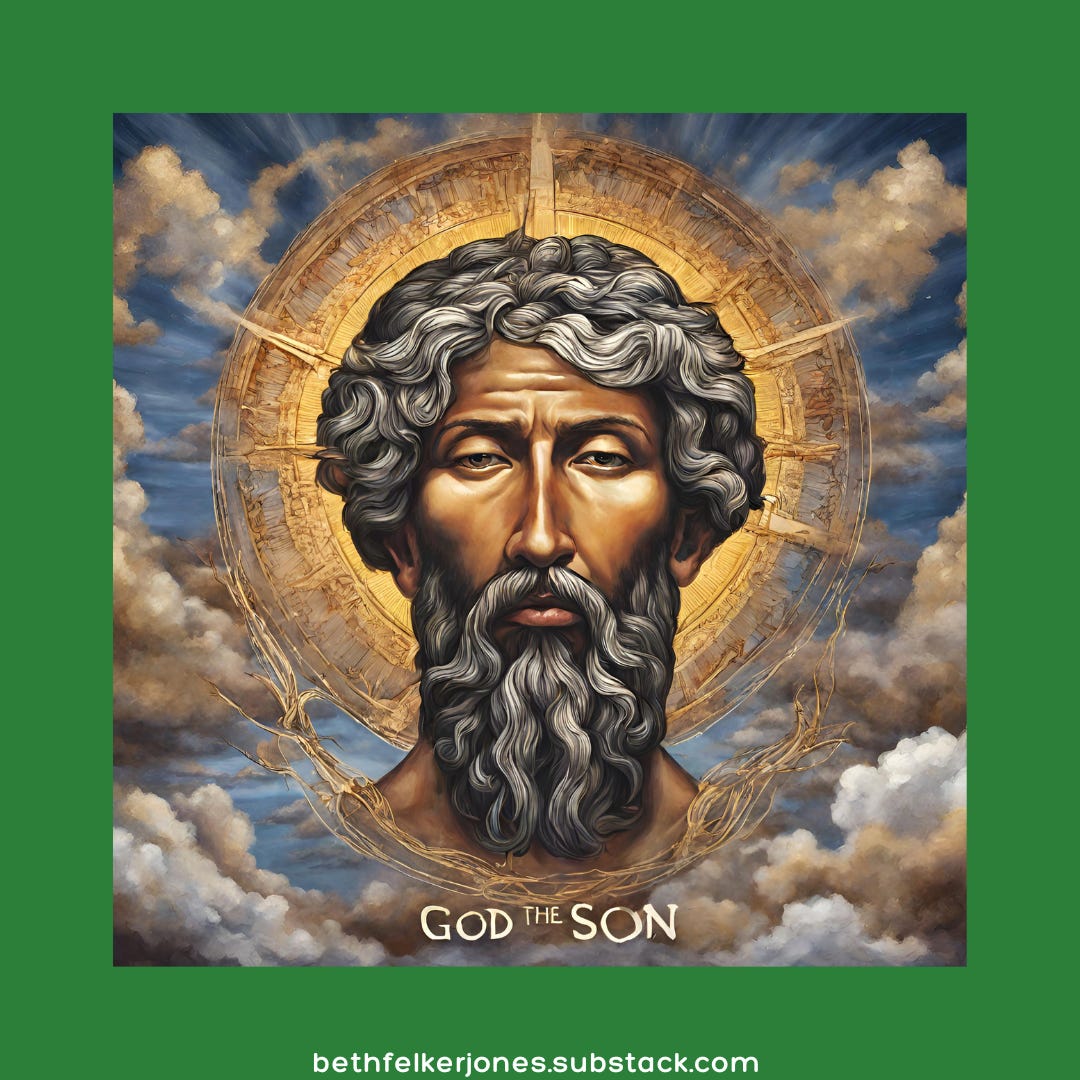

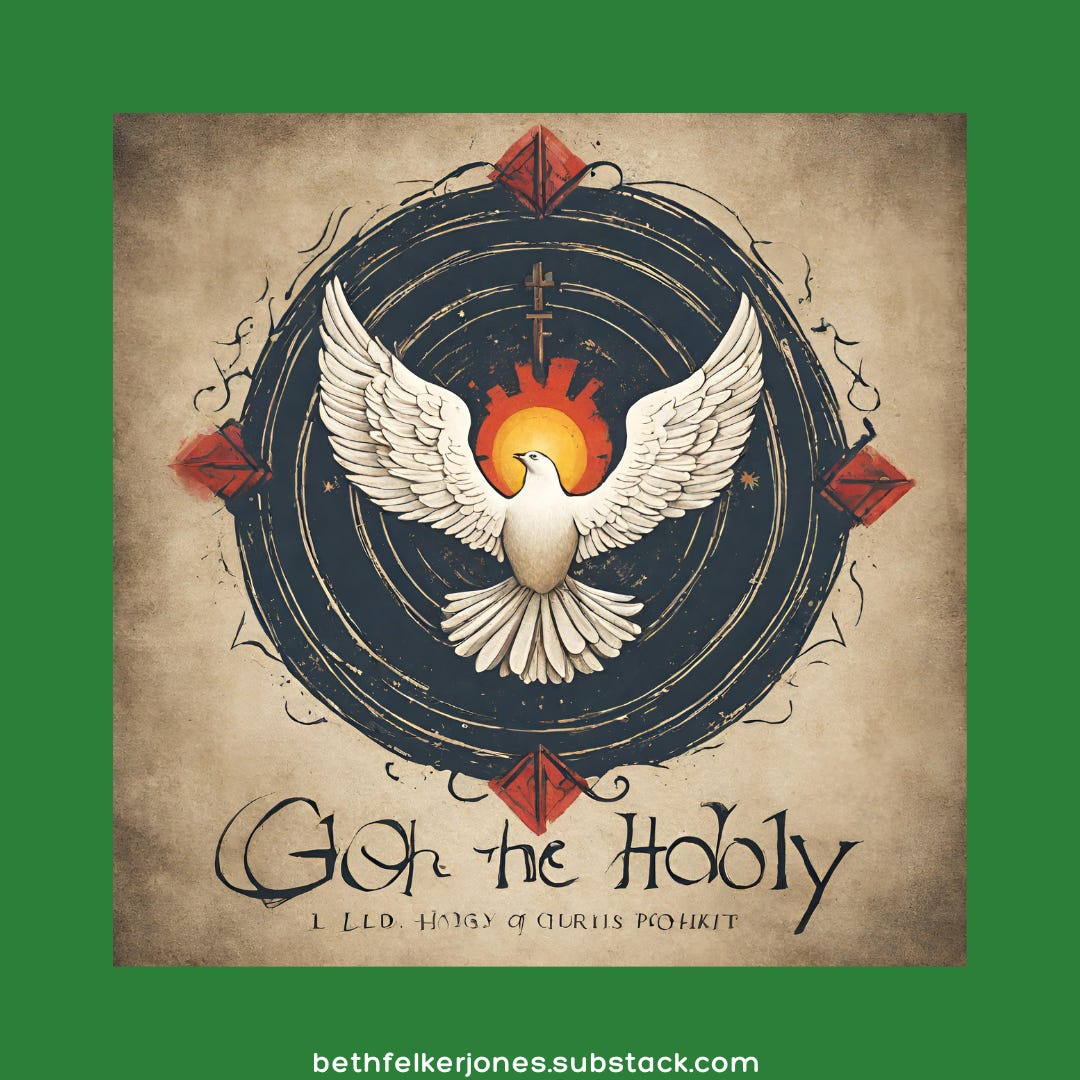

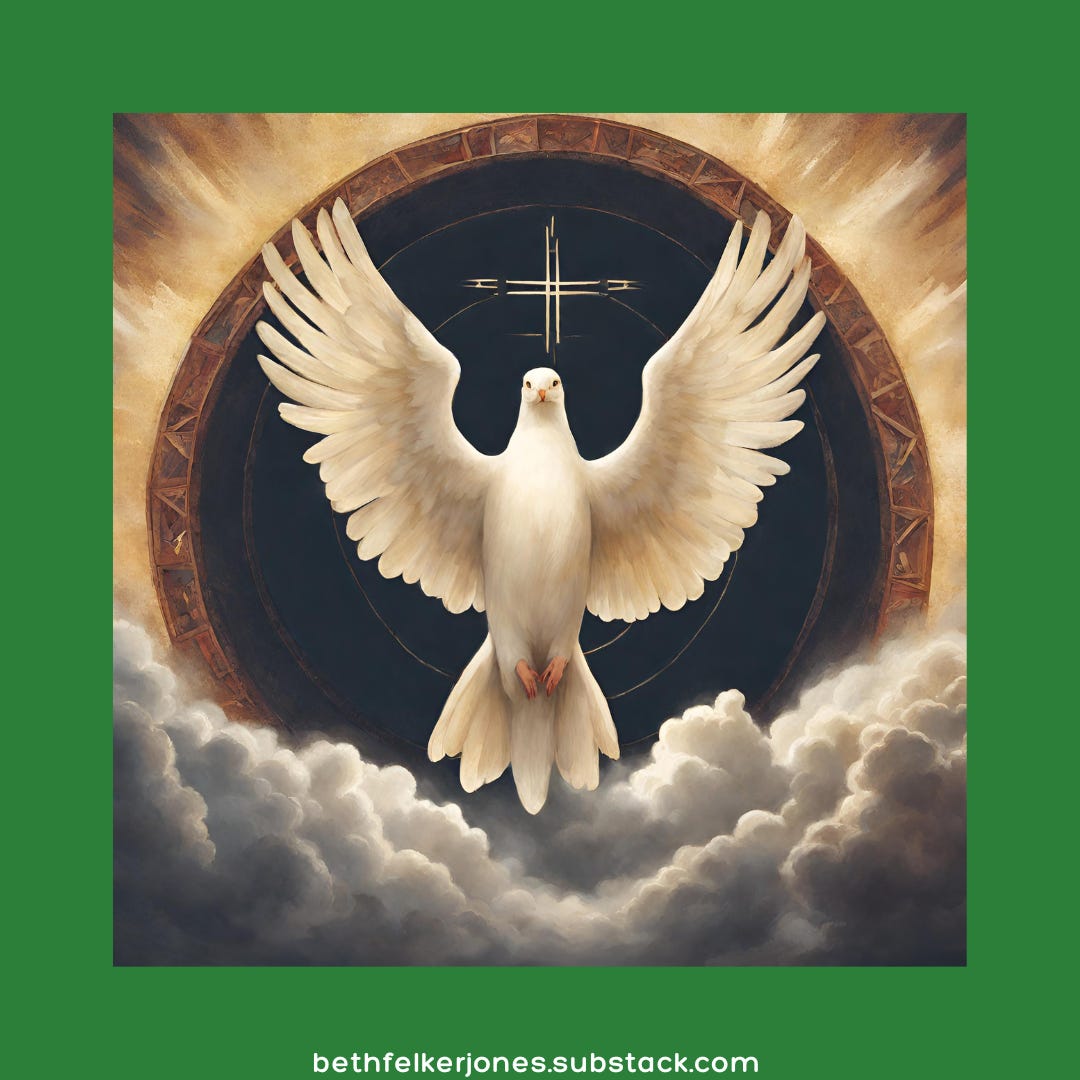
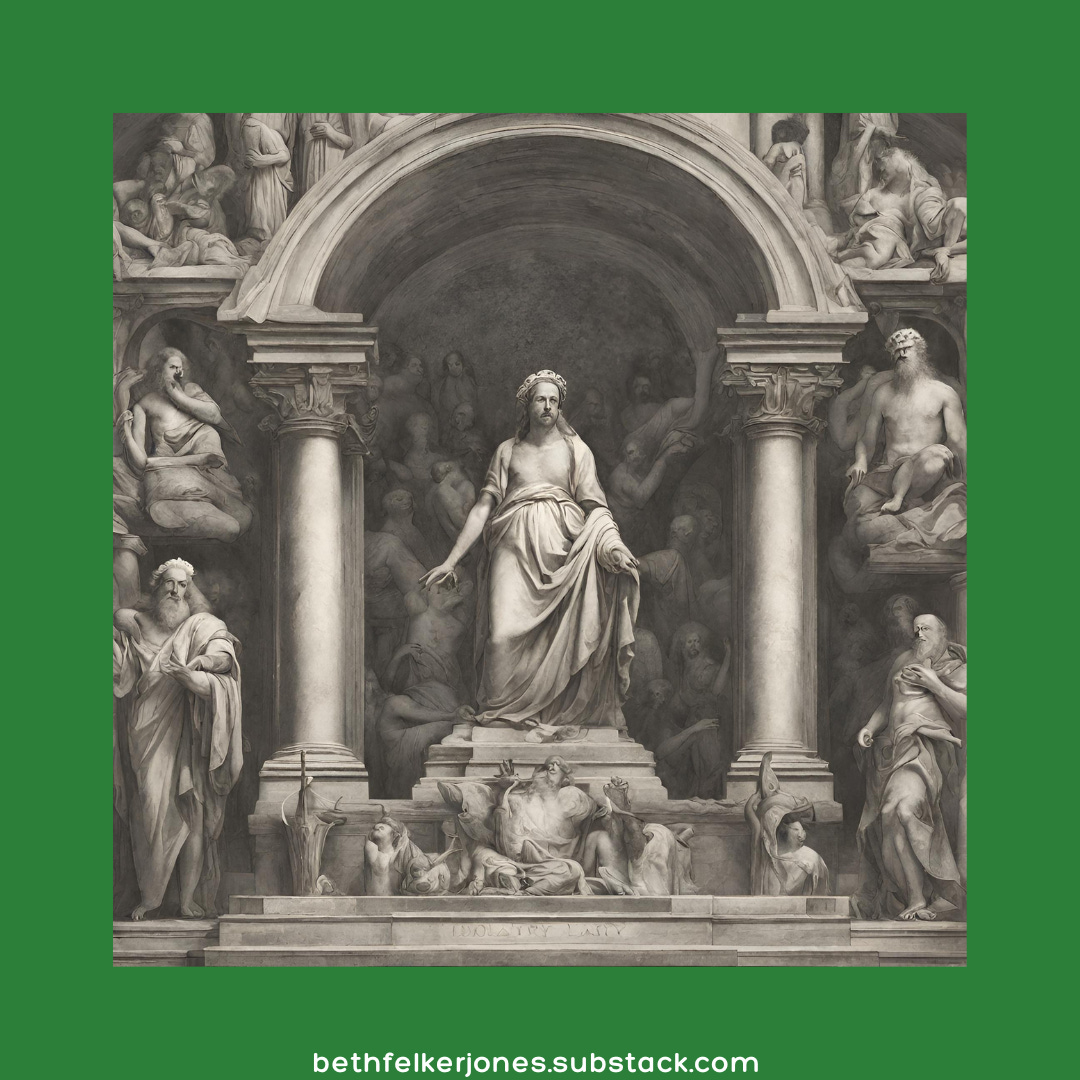
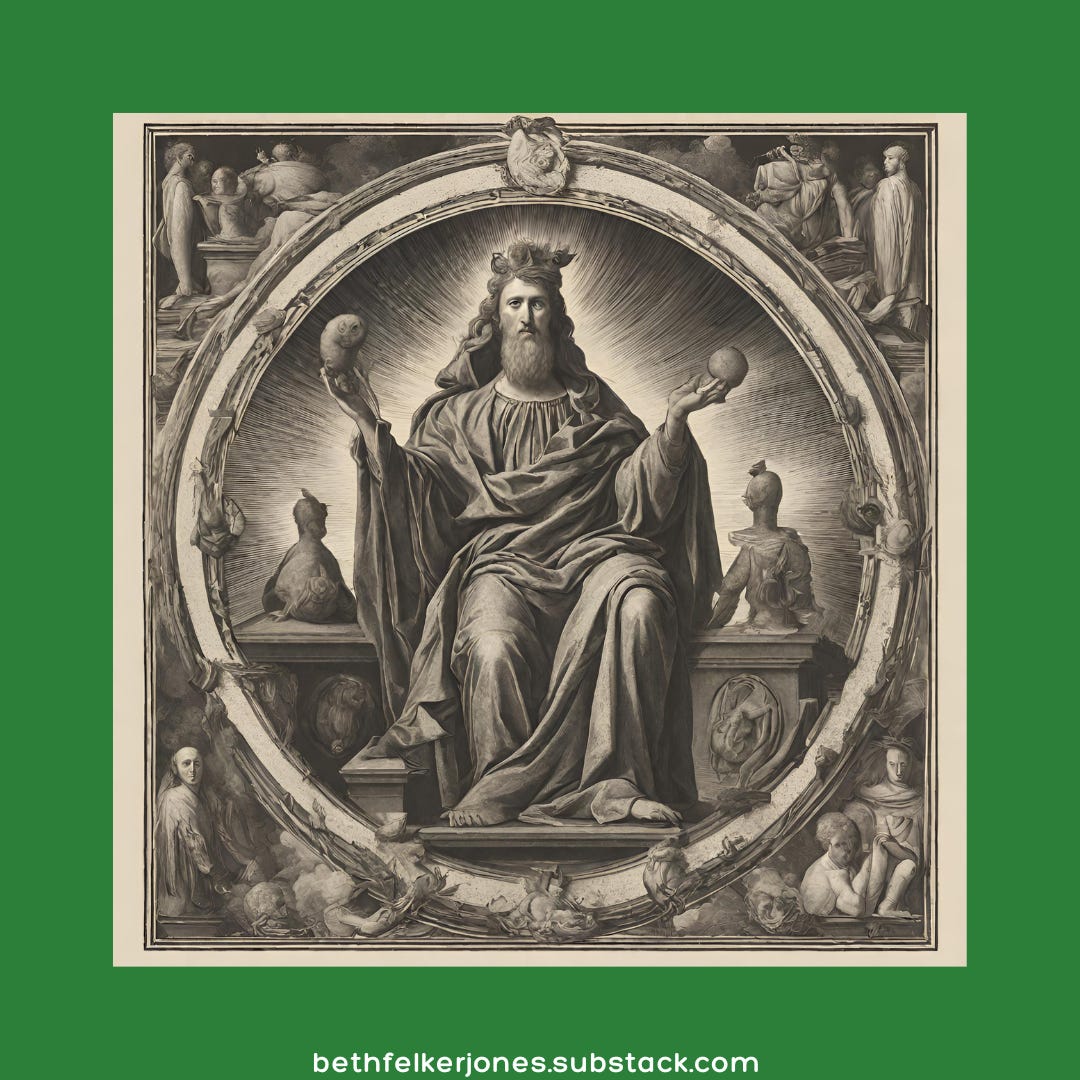


That is wild. How revealing.